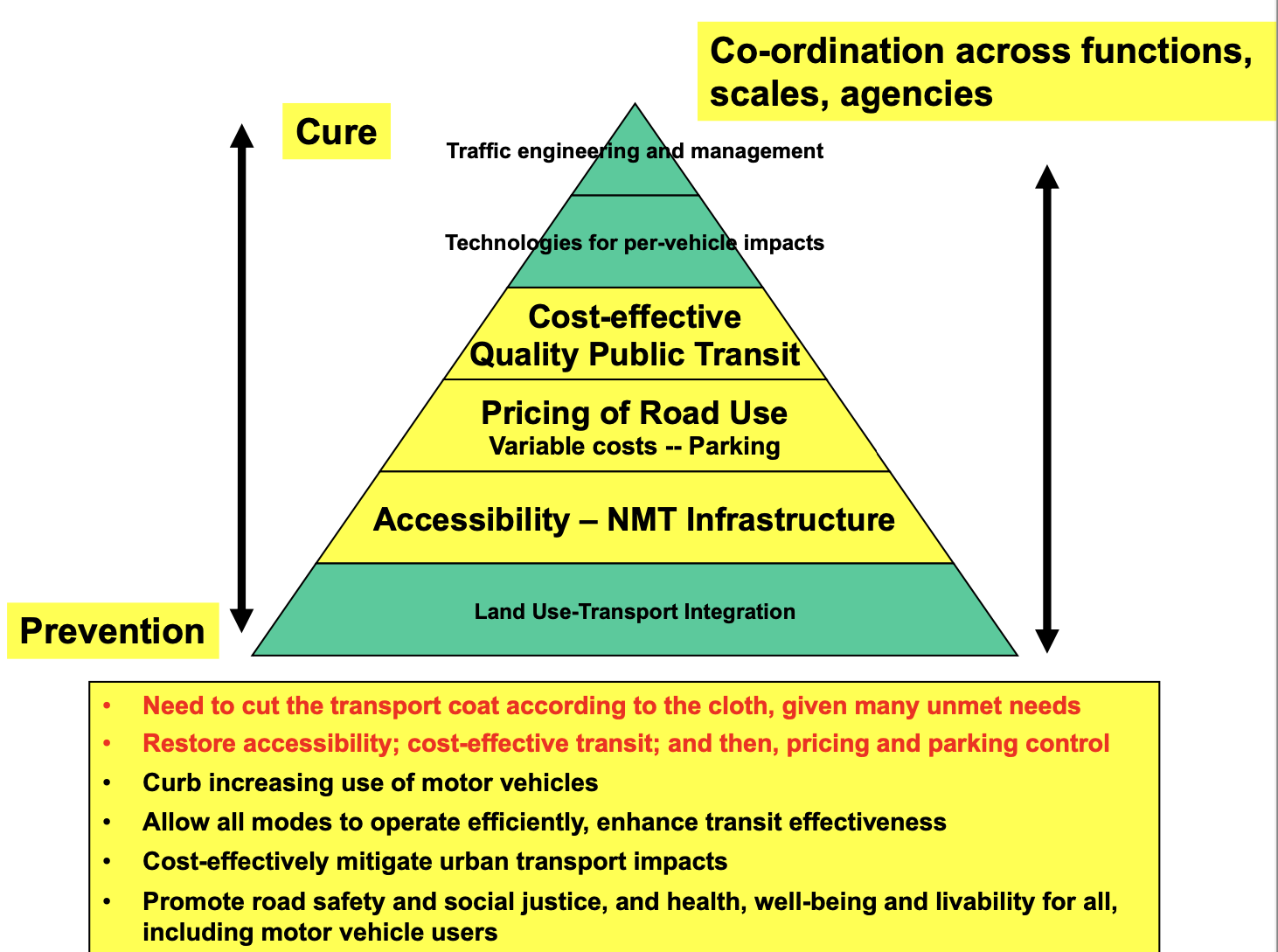ENVR 201: Urban transport in low-middle income countries
1/14
There's no tags or description
Looks like no tags are added yet.
Name | Mastery | Learn | Test | Matching | Spaced |
|---|
No study sessions yet.
15 Terms
What is happening to motorization levels outside OECD? And why?
Motorization levels are low but increasing rapidly
OECD countries have saturated car ownership markets so there is not much growth there
Non-OECD countries are not saturated yet
What does BRIC stand for?
Brazil, Russia, India, China and South Africa
Where is motor vehicle production increasing and decreasing?
Increasing intensely in China, India, Mexico, Brazil
Decreasing intensely in EU, Japan, US, Spain, France
Where is India and China in terms of motor vehicle production by country?
China is the greatest producer
India is the 4th greatest
What is the most common type of motor vehicle produced in India?
Two wheelers account for 79% of total motor vehicle production in India
What are some of the key impacts of increased motorization? (in terms of death)
road traffic fatalities and injuries are a serious issue
1.3 million traffic fatalities 93% in LICs and MICs
leading cause of death in 5-29 year age group
smog and air pollution
What are some of the impacts of rapid motorization
range of technological, economic, socio-sultural, behavioural, political institutional, policy factors —> inpacts, MV activity and ownership
very high exposure and impacts, even though few own vehicles
high density (mixed use and poverty) not like rich people keep their motorized vehicles in their own enclaves
poor pedestrian and cycling infrastructure
inadequate infrastructure (road length/vehicle kilometer); situation particularly serious in medium-size cities
vehicle, fuel technologies improving but high in-use emissions
inadequate resources - poor traffic and parking control; fuel adulteration; inspection and maintenance
What is a convenient diagram to explain the various factors that cause high motor vehicle ownership/use at low average incomes?

So in India has motor vehicle use become the most common transit type?
No! Walking, and public transit are still the most common
Want another triangle diagram? But for LICs and MICs

What is the most serious impact of motor vehicle activity and planning for it?
loss of access
there will always be people who do not have access to vehicles and the barrier to owning cars will always be higher than the cost of transit fair
additionally as cars are planned for (short or long trips) it removes the habit of avoiding car use. and the more you drive the more you plan to drive etc.
Summary of India vs the west
India: high density, high mixed use, low income levels, high potential for low vehicle use and high non-motorized transit mode shares —→ non-motor vehicle modes are discriminated against despite low resources —→ means that India is getting trapped in a cycle of more and more motorized transit + addition of different types of motorized vehicles (2 and 3 wheel vehicles) ——> very serious impacts (especially equity wise) in comparison to North America
The west: low density, low mixed use, sprawl, is caused by low cost of owning and using a vehicle and high average incomes; cars accommodated for in highway construction. ——→ tends toward more MV always
So what should our urban transport policy be?
must cater to growing need for mass mobility while minimizing adverse impacts
ever growing motor vehicle ownership and use is not inevitable
There are some non-policy based influences: socio-cultural factors (but pale in comparison to policy)
Problem is not motor vehicles necessarily but their excessive use and neglect of pedestrians
SHOULD FOCUS ON PEOPLE — in urban contexts
prioritize most vulnerable and sustainable modes (motor vehicles should be left behind for climate reasons but also because they are often the vehicles of the wealthy)
Accessibility concerns in terms of order of how to address excessive car use
make sure to make public transit usable and effective and accessible before you make motor vehicle use prohibitively costly ——> so people have alternatives and there is less protest
What does the prof think is causing these issues?
politics
policies
and priorities
Basically protecting and representing the very wealthy exclusively
Those who walk don’t have a say and those who have a say don’t walk
People who are wealthy and secure enough to have a car can also lobby for their interests more than the rest